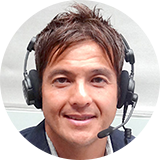The tournament kicked off under a state of emergency
When the 15-day spring tourney began on March 14, Tokyo was still under a state of emergency along with three neighboring prefectures, due to the coronavirus pandemic. So, just like the few previous tournaments, this one was held with a cap of 5,000 spectators per day. The state of emergency ended a week later, but the sumo association kept its anti-coronavirus measures in place and still asked fans not to cheer or eat in their seats. The fans didn’t seem to mind the strict guidelines, as many flocked to the Kokugikan arena to watch. And they kept on rooting for their favorite wrestlers by waving towels and giving big rounds of applause
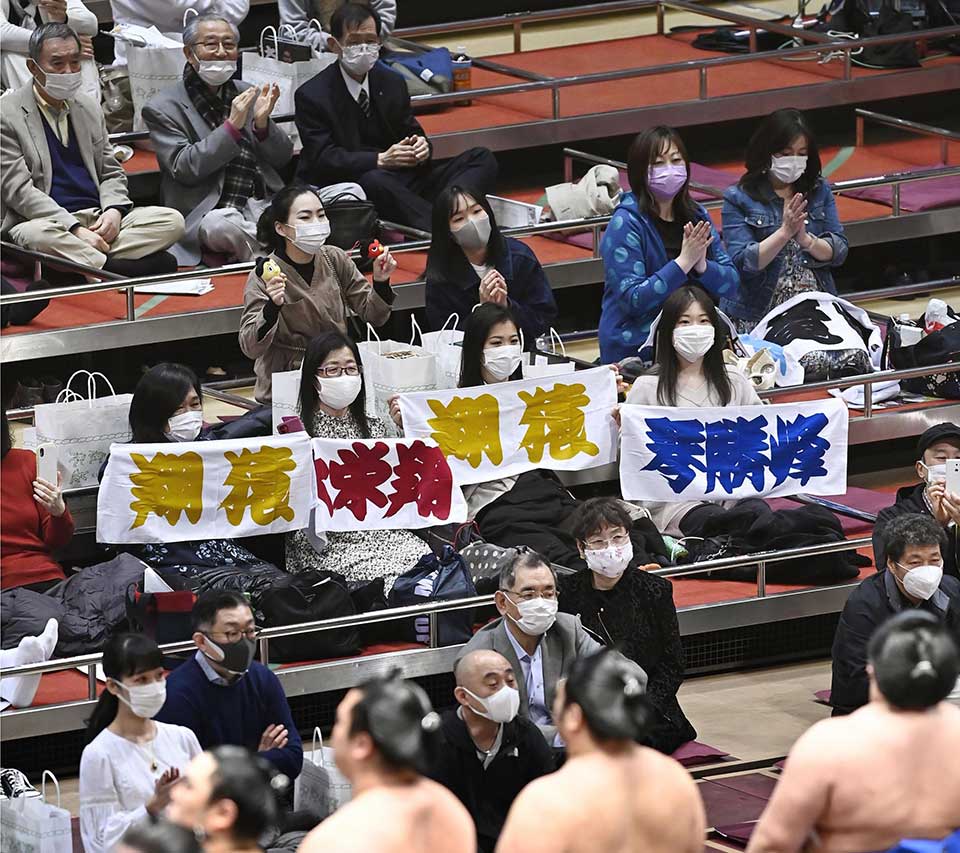
Former ozeki champion regains title
The man who received more applause than any other was Terunofuji, who competed at the third-highest rank of sekiwake. He was aiming not only to win the championship but also to earn promotion to ozeki, the second-highest rank. The Mongolian had racked up a total of 24 wins in the two previous tournaments and needed nine this time to reach the benchmark of 33 considered necessary for promotion to ozeki.
He got off to bumpy start and seemed like he’d have difficulty racking up the required number of wins. After 10 days, his record was 7 wins and 3 losses, and he’d fallen two wins behind tournament leader Takayasu. But Terunofuji picked up the pace and won four consecutive matches to enter the final day with sole possession of the lead. All he needed to do to win the championship was to beat Ozeki Takakeisho, and that’s exactly what he did. As a result, he won his third top-division title and his 12 wins this time gave him a total of 36 in the last three tournaments — more than enough to prove himself worthy of promotion to ozeki. During the championship ceremony, he said he was so happy that he was able to show appreciation to his fans and supporters by winning another title. He also said he’ll do his best in future competitions so he can perform good sumo and win again.
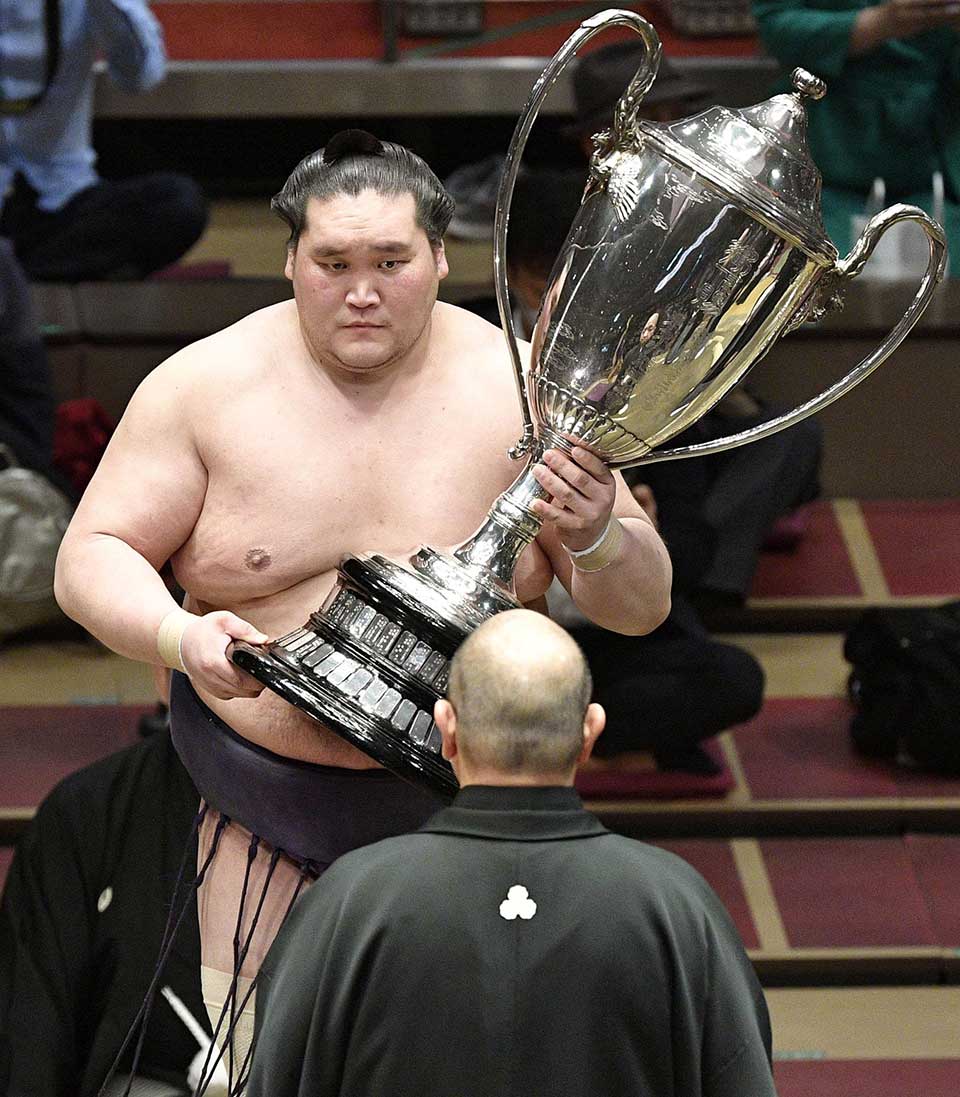
Three days after the tournament’s conclusion, the sumo association’s board of directors held an extraordinary meeting to officially promote the 29-year-old Terunofuji to ozeki. It was actually the second time for the Mongolian to receive such a promotion. He lost the rank in 2017 and dropped to the second-lowest division, Jonidan, after suffering numerous injuries and poor health. But he climbed his way back, returning to the top Makunouchi division last July for the first time in two and a half years. No other wrestler has fought back to ozeki after being demoted as low as Jonidan. In the May Tournament, Terunofuji will enter the ring as an ozeki for the first time in 21 tournaments. Congratulations to Terunofuji for winning his third Emperor’s Cup and making it back to ozeki.
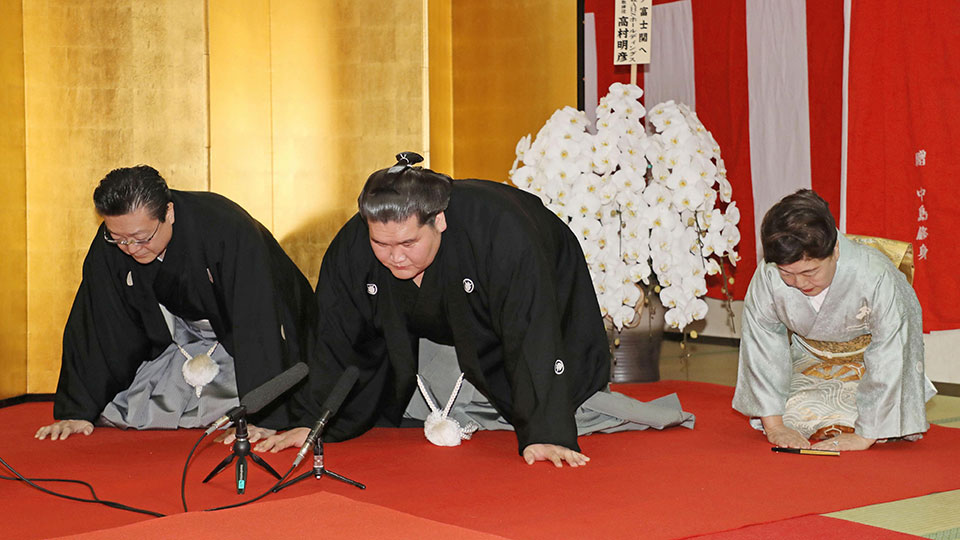
Yokozuna Kakuryu retires
The spring competition is often dubbed “The Stormy Spring Tournament” because of its wild and unpredictable nature. Well, the storm stayed away from the ring this year when Yokozuna Grand Champion Kakuryu announced his retirement. The news wasn’t that much of a surprise though, as Kakuryu had sat out eight of the last nine tournaments, including the spring meet, due to injuries to his lower back, left foot and right elbow. Kakuryu simply ran out of time and excuses. After the November Tournament last year, the Yokozuna Deliberation Council issued a warning to Kakuryu over the absences and his failure to fulfill his responsibility as a grand champion. So, there’s no question he was under tremendous pressure.
At his retirement press conference, Kakuryu said he’d had a strong desire to get back into the ring one more time for everyone who supported him. He said he’d been confident that he could still compete as long as he recovered from his injuries, and was disappointed that he wasn’t able to do so.
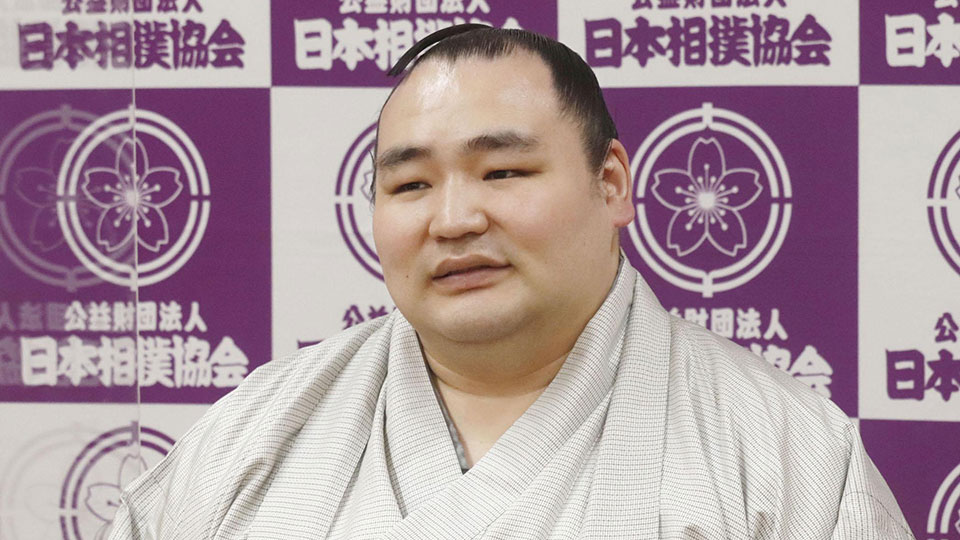
Kakuryu is from Mongolia. He made his debut in the 2001 November Tournament and was promoted to the top rank of yokozuna in May 2014. He maintained the rank for 41 tournaments and finished his career with 6 top-division titles. The 35-year-old obtained Japanese citizenship last year so that he could become a stablemaster after retirement. He’s one of the nicest and smartest people I’ve ever met. I’m sure he’ll become a great leader and teacher as a coach for younger wrestlers.
Hakuho missing in action…again
Kakuryu’s retirement leaves just one yokozuna — Hakuho. Hakuho did compete in the spring tourney…but only for two days. On Day 3, he announced his withdrawal from the competition, citing a right knee injury. It was his fifth straight tournament absence. Soon after pulling out, Hakuho had endoscopic surgery on the knee and has already started rehab. The 44-time champion says he won’t be able to make it back for the next tournament in May, but will do his best to compete in the July tournament.
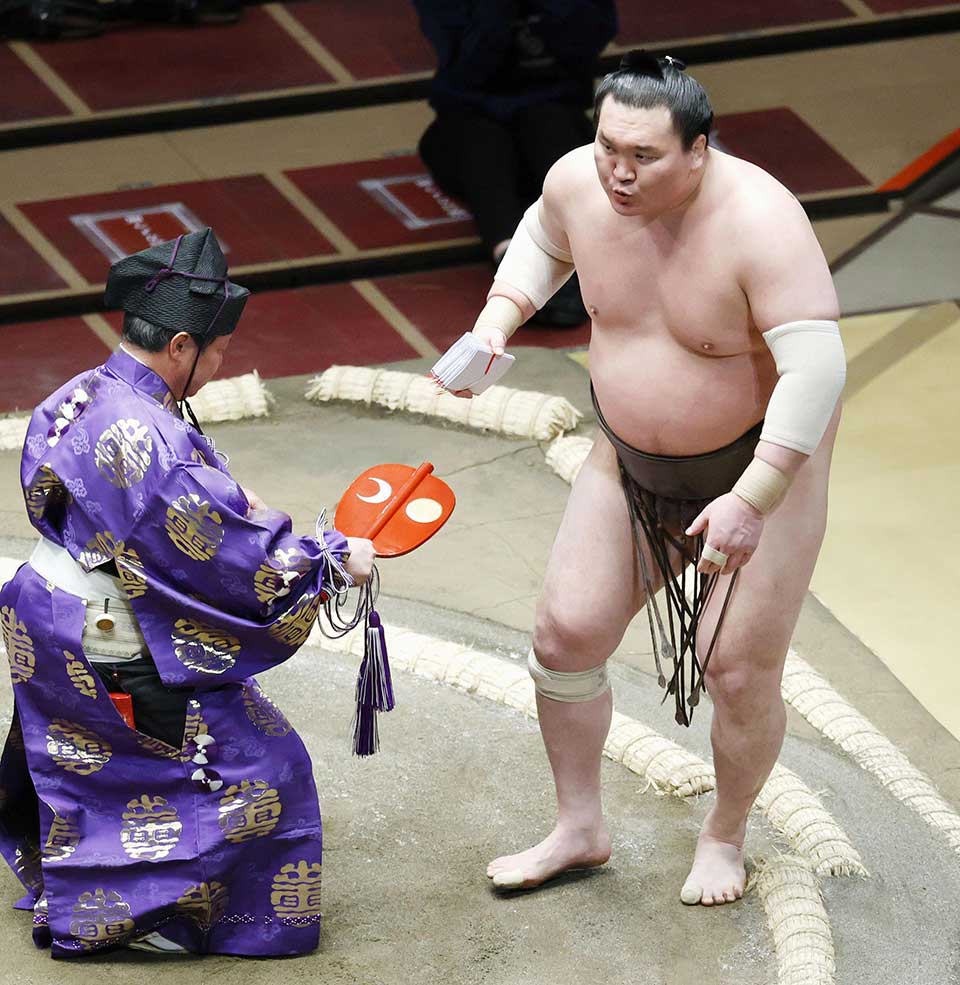
In November, the Yokozuna Deliberation Council issued a warning to Hakuho over his absences and not meeting the high expectations that come with the rank. The council says it’ll wait to see how Hakuho performs when he makes his comeback in July. So, it’s do-or-die for the lone yokozuna as the clock keeps ticking toward midnight. Let’s hope that sumo’s alpha male is on the mend and will be good to go when his make-or-break contest kicks off on July 4.
Ozeki trio falters
The three ozeki champions — Shodai, Asanoyama and Takakeisho — all underachieved at the spring meet. Asanoyama and Takakeisho were able to win 10 bouts each, but Shodai failed big-time as he finished the contest with a disappointing 7 wins and 8 losses. As an ozeki, Shodai gets a one-tournament grace period and will not face any kind of immediate demotion, but he’ll be required to get more wins than losses in the next tournament in May. If he fails to do so, he’ll be stripped of his ozeki rank.
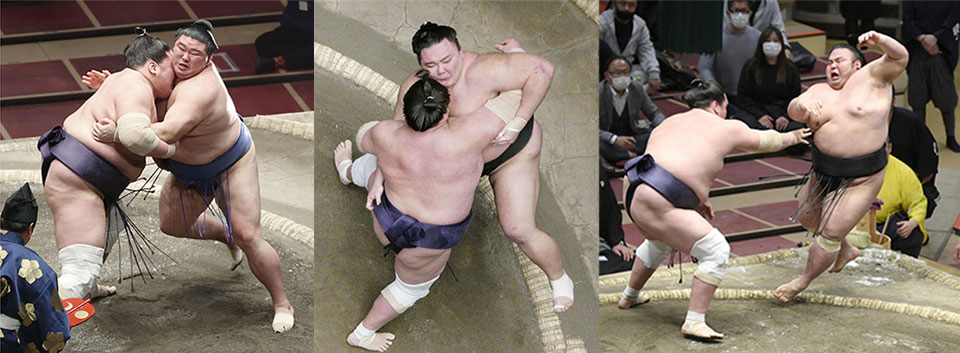
What was so discouraging in March was that none of the three were able to beat Terunofuji to make their presence felt. Terunofuji stomped all over them and, as a result, walked away with his third title. Shodai, Asanoyama and Takakeisho must train harder, improve their skills and get much stronger if they want to keep up with the Mongolian dynamo.
Special prize winners
Champion Terunofuji was also given the Outstanding Performance Award for sweeping the three ozeki and performing at a high level throughout the 15-day competition.
Meisei won the Fighting Spirit Prize for his energetic sumo throughout the tourney. He won 10 bouts and is expected to rise to sanyaku, or either the sekiwake or komusubi rank, in the very near future.
Aoiyama also got the Fighting Spirit Prize, for remaining in the title race until the last moment. He had a chance to be in a playoff had Terunofuji lost his match on Day 15, but it was not to be. The Bulgarian did finish the contest with an impressive 11 wins.
The Technique Prize went to Wakatakakage. His two older brothers also compete in the professional ranks, but he’s the only one at the top Makunouchi level. Wakatakakage won 10 matches with blazing speed and a variety of great techniques in March.
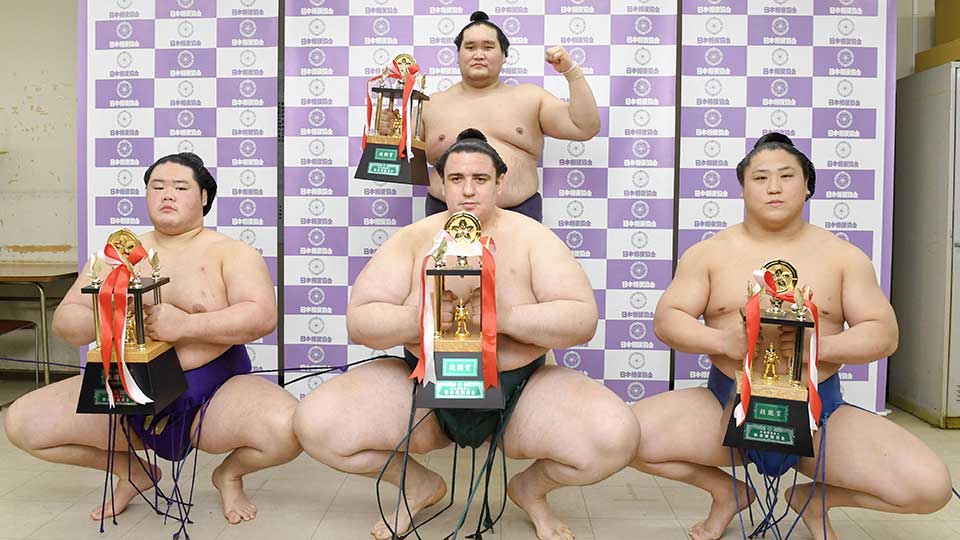
Looking ahead
Now that the spring tourney is in the books, let’s shift our focus to the future — the May tournament. No yokozuna will be competing, and that typically means we could be in for another topsy-turvy contest.
Having said that, four ozeki champions will be competing, so the tournament could very likely be won by one of them. But recent history shows it’s not that simple. We’ve seen quite a few fresh faces winning the Emperor’s Cup lately and it could very well happen again in May if the higher-rankers fail to step up.
I strongly feel that if Terunofuji is able to stay healthy and injury-free, he’s the closest of the four ozeki to making it to the top rank of yokozuna. The 29-year-old says he has no time to waste if he wants to realize his dream of becoming a grand champion. We’ll see whether Terunofuji can keep his foot on the gas and win back-to-back titles or if a lesser-known wrestler shocks sumo fans by coming out on top.
The May Tournament gets underway on Sunday, May 9, in Tokyo.

